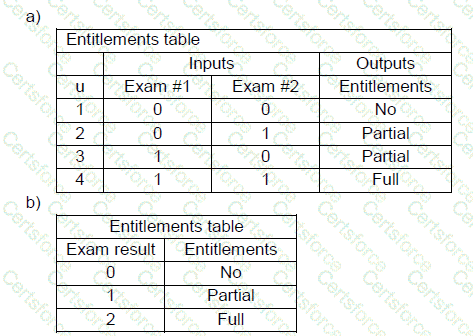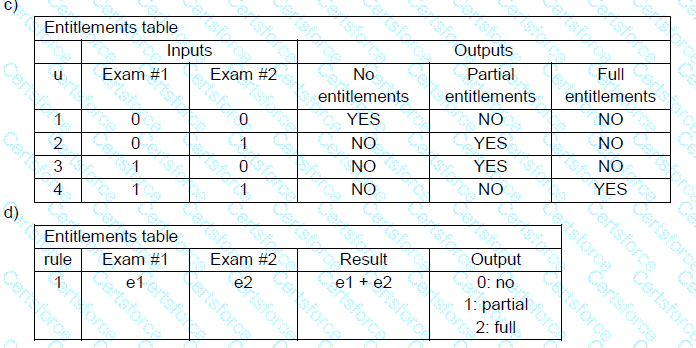Given the following attributes:
i.commercializability
ii.functional suitability
iii.viability
iv.reliability
v.security
vi.cognitive ability
vii.maintainability
Which one of the following answers contains quality attributes that are MOST relevant for acceptance testing?
Which one of the following statements describes the collaboration between business analysts and testers BEST?
Which of the following pillars of UX requirement analysis is described BEST?
Which tool fits the mentioned acceptance test activities BEST?
Which of the following statements regarding defects is MOST correct?
Which one of the following acceptance criteria relates to security requirements?
Which of the following is the BEST example of a Gherkin-style test for a web-based banking application?
What is considered as good practice regarding business process modeling?
Suppose you are testing a new professional exam support system. As input the system takes two grades from two exams. For each exam the possible grade is 0 or 1 point. As output the system returns a single string – the decision about the entitlements: if the total score is 2, the candidate receives full entitlements. If the total score is 1, she receives partial entitlements. If the total score is 0, the candidate fails and receives no entitlements.
Which of the following is the correct Decision Model and Notation (DMN) model for this situation?


You are leading a brand new project team whose members are coming from all over the organization and have no former experience in working together. You need to build a common vision and team spirit. What workshop would fit BEST: